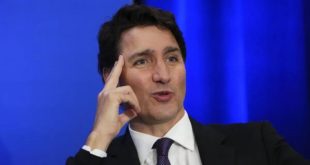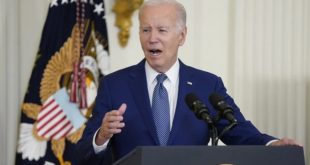 Hardeep Singh Nijjar: Canada’s Stance on Alleged Khalistani Extremist’s Killing
Hardeep Singh Nijjar: Canada’s Stance on Alleged Khalistani Extremist’s Killing
In a significant turn of events, nearly three months after the assassination of alleged Khalistani extremist Hardeep Singh Nijjar, Canadian Prime Minister Justin Trudeau has made a bold statement, holding Indian agencies responsible. Notably, he also issued a directive for an Indian politician to return to India. Trudeau’s statement, coupled with the actions of the Canadian government, has been met with differing reactions from the Indian government and the United States. Let’s delve into the evolving perspectives on this matter.
The Evolution of India’s Perception
India’s stance on the United States has undergone significant changes over the decades. Former Defense Minister A. K. Antony once stated that India couldn’t trust the United States and referenced the 1971 India-Pakistan war as a point of contention. However, in a recent Q&A session at the Hudson Institute, India’s Foreign Minister S. Jaishankar expressed that India and the United States not only find common ground on global issues but are also building consensus on a range of matters. This shift indicates that India has moved beyond the apprehensions caused by Henry Kissinger’s China policy.
Changing Perspectives
S. Jaishankar’s remarks come at a time when Canada’s handling of the alleged terrorist Hardeep Singh Nijjar’s assassination is causing strains in India-U.S. bilateral relations. Following Trudeau’s statement on September 18th, Indian authorities have not provided any evidence to substantiate the allegations. Meanwhile, various American officials are calling for a thorough investigation into the case. Amid these developments, the U.S. Ambassador to Pakistan embarked on a trip to Pakistan-administered Kashmir, a move that drew strong objections from India.
Expert Opinions
Experts argue that today’s India is not the same as the India of 1962, 1965, or 1971 when access to information was limited for the Indian public. In the modern era, the Indian populace’s views matter alongside those of the political leadership. India is assessing how the Five Eyes alliance, comprising Canada and the United States, might try to meddle in India’s affairs, leading to India’s measured response. It is also imperative for the United States to ensure that its actions do not strain relations with India, which is a crucial player in the Indo-Pacific region and a balancing force against China.
The Asian Geopolitical Landscape
From a geopolitical perspective, the United States is wary of India’s central role in the Indo-Pacific and its status as the sole power that does not align with either ASEAN or Middle Eastern countries. In light of this, the Four Eyes alliance (excluding New Zealand) has urged the United States to help reduce India’s anger. Just as the United States has the prerogative to defend itself against external threats, India also has the same right.
In conclusion, the evolving dynamics between India, Canada, and the United States reveal the complexity of international relations in today’s world. India’s stance on global issues is no longer fixed, and it seeks to engage in diplomatic dialogues on an equal footing with other nations. While the United States should acknowledge India’s sovereignty, it is equally vital for India to maintain its diplomatic composure and not let external influences affect its relationships with other nations.
 Suspense Crime Sach Ka Dam
Suspense Crime Sach Ka Dam


